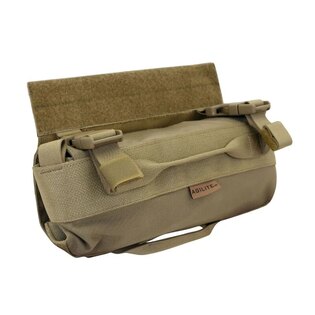REVIEW: BuddyStrap™ Agilite® Rescue Harness
We got our hands on the BuddyStrap product from the Israeli company Agilite. This is an improvised harness intended for evacuating and carrying the wounded from the battlefield with an emphasis on maintaining the combat capability of the wearer (rescuer). At the same time, it limits the number of unit members who would otherwise be needed to evacuate the wounded using classic stretchers.
We tested the product for a period of 2 months in basically all types of tactical activities and in different types of environments that we can get into as a small unit designed for specific tasks (CQB, activity in mountainous terrain, activity in forested terrain, performance of tasks at night, etc.).
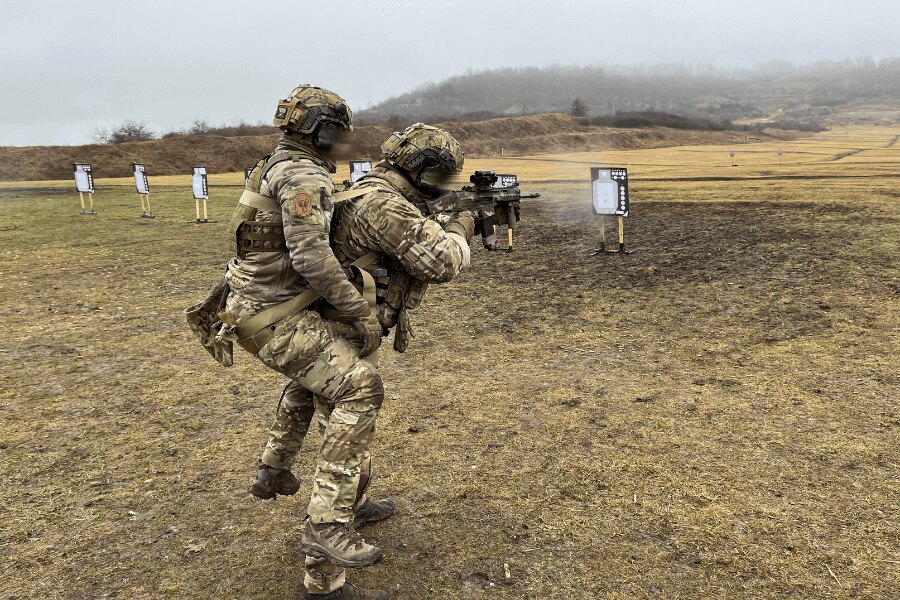
The BuddyStrap rescue harness from the Agilite company is intended for evacuating the wounded from the battlefield while maintaining the combat capability of the rescuer.
Characteristics and description
In advance, it is necessary to mention that this is an improvised tool for evacuating the wounded. In the case of certain types of injuries, where, for example, a spinal injury might be suspected (fall from a height, etc.), I would choose a different type of removal to evacuate the injured.
What we mainly focused on when testing the BuddyStrap:
- Fastening in the harness and at the same time the speed and ways in which I am able to place the wounded in the harness.
- Possibilities of carrying the wounded with different types of equipment.
- Carrying out basic maneuvers with a wounded person in a harness – e.g. shooting, walking, running, handling personal equipment.
- Last but not least, we observed how quickly the material of the BuddyStrap wears out during demanding and frequent use.
Regarding the equipment of the rescuer and the wounded, we specifically tested 3 basic variants:
- The wounded and the rescuer are wearing full ballistic protection, all personal equipment and weapons except the backpack.
- The wounded person is only in clothes without ballistic protection (only with a helmet) and personal equipment, and the rescuer has complete ballistic protection, equipment and weapons.
- The wounded and the rescuer have no equipment, weapons or ballistic protection.
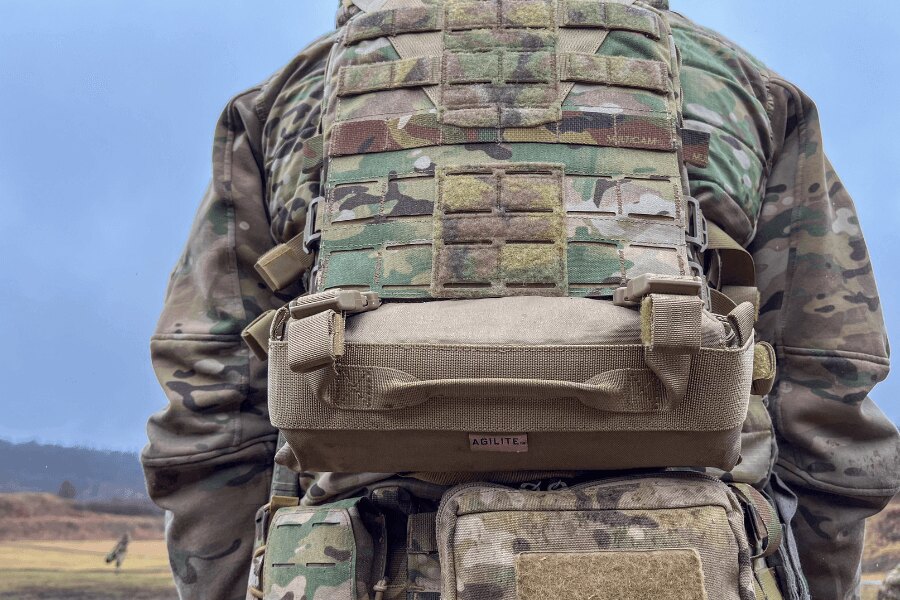
Agilite's BuddyStrap rescue harness can be carried and secured using a removable velcro panel or MOLLE webbing.
Methods of attachment to the harness
The harness can be carried and fixed in several ways:
- using a removable velcro panel (e.g. under the lapel of the vest),
- using tridents for MOLLE binding on the backpack.
In both cases, the BuddyStrap can be detached and inserted into the backpack just like that.
Ways of fixing the wounded in the harness:
- The easiest way is when the injured person is able to communicate, move their upper limbs and there are at least two of you to fix them.
- The most challenging situation occurs when the wounded person is unconscious and the rescuer is alone in fixing them in the harness.
- The most effective way from our point of view is the option where you prepare the BuddyStrap under the injured person and then adjust and tighten the harness by leaning on the injured person.
Fastening speed
As for the speed of fixing, it's like everything else – practice makes perfect, and after a few applications, preparation and fixing becomes an automatic process, which took us about 1 minute at the end of testing.
When fixing and preparing the harness, care must be taken to tighten the main carrying straps. It often happens that when handling quickly, the strap twists and it becomes more difficult to tighten. The biggest fear at this moment was about the plastic buckles on the tightening, when we were afraid that they would not crack due to the tightening of the twisted strap. In any case, even a twisted strap can still be tightened and no damage was caused by this effect.
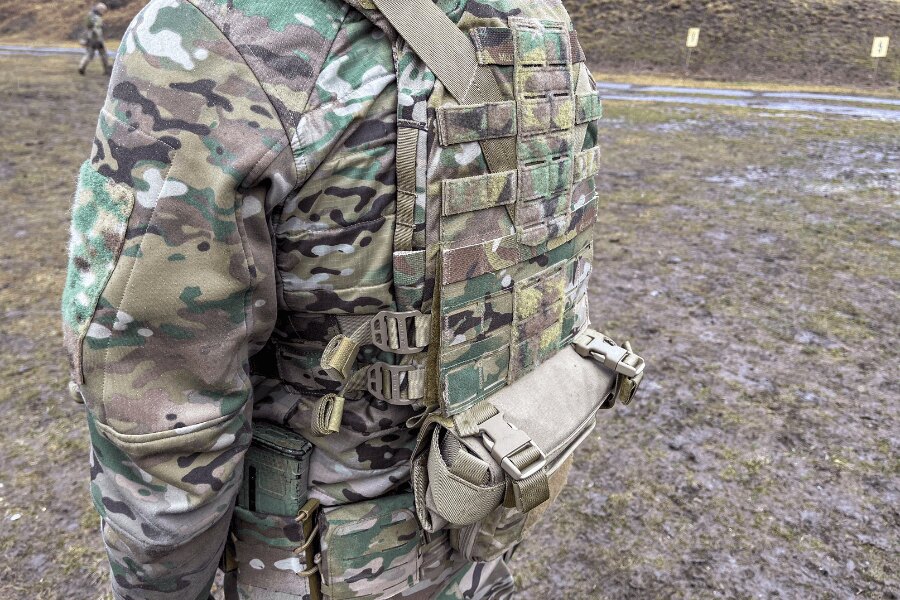
When attaching and preparing the Agilite BuddyStrap rescue harness, care must be taken to tighten the main support straps.
Using the BuddyStrap at night
Using the BuddyStrap at night is obviously more difficult, but still doable. We tried the option with both night vision and with the help of red light. The only complaint I have is the marking of, for example, the right and left sides on the BuddyStrap, when I would appreciate marking with the help of an IR element, and thus easier handling when using the NV.
Carrying the wounded with various types of equipment
The very act of throwing a wounded man can be difficult for someone. And of course, the more you and the wounded person have on you (meaning equipment), the more difficult it is to throw and then evacuate. In the video manual directly from Agilite, it is mentioned that if you skip "legday", this method of evacuation is not for you.
After securing the injured person in the harness, it is necessary to dynamically roll over (see video) and then go on all fours until the whole body is straightened.
The biggest plus of the harness is the possibility of securing the wounded even with a ballistic vest and complete equipment. It's not pleasant for the wounded (carried) or the rescuer (carrier), but as the fastest way while maintaining ballistic protection for both of you, this method is doable.
For us, the best way is to disarm the wounded (we left only the helmet). The comfort for both the rescuer and the wounded will be fundamentally improved and at the same time the rescuer's ability to continue tactical and combat activities will be improved and significantly preserved.
The civilian way, where both the rescuer and the wounded are only in clothes and without equipment, is ideal for sports activities in pairs, e.g. during VHT or as part of training.
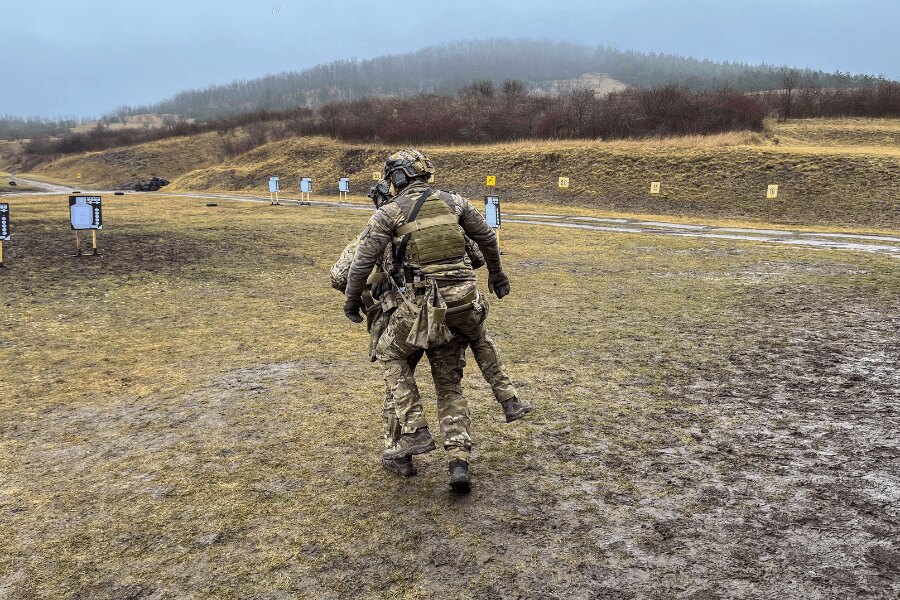
The biggest benefit of the BuddyStrap rescue harness from Agilite is the possibility of securing the injured even with a ballistic vest and complete equipment.
Basic harness maneuvers (shooting, walking, running)
The advantage of the BuddyStrap is a certain degree of preservation of the combat capability of the wearer (rescuer). For example, shooting is possible even with a wounded person on your back, however, when throwing a weapon, the upper limbs bleed after some time, and shooting becomes less and less effective.
As for reloading and working with the rescuer's personal gear, it remains as if you were carrying a heavy pack on your back. Even with a wounded person on your back, it is not a problem to get to the magazines on your belt and carry out combat and tactical reloading, work with the radio or the actual treatment with a tourniquet, etc.
Walking and running depend on the physical fitness of the individual and the good fastening of the wounded in the harness. Great emphasis must be placed on subsequently tightening the injured person so that the center of gravity is as high as possible above the rescuer's buttocks and at the same time closest to his body.
The quality of the workmanship and wear due to frequent use
- With Agilite, we are used to excellent sewing and world-class product quality. BuddyStrap is no different.
- We tested the harness hard and did not take into account its wear and tear.
- There were also multiple deployments and evacuations many times in a row in cold, wet, dusty, etc. In all circumstances, the BuddyStrap worked great, even when it failed to deploy properly and the straps were twisted or poorly fastened.
- After an intensive 2 months of use, the seams and material (cordura, nylon and buckles) show no defects, tears or damage due to use, apart from dirt.
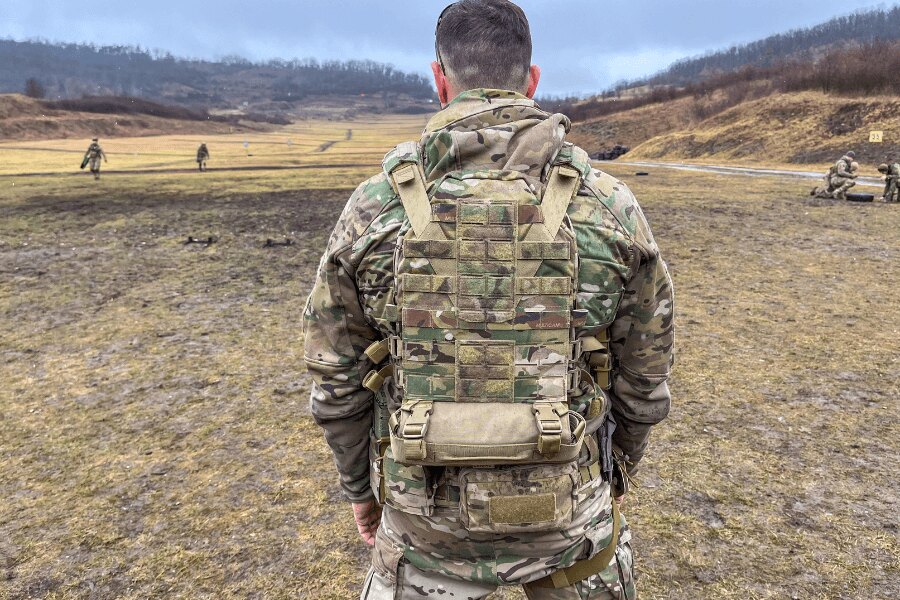
The BuddyStrap rescue harness from Agilite is a reliable piece of equipment for units operating in small numbers and relying primarily on self-help.
Parameters
- Height/Length: 9.9 cm
- Width: 25.4 cm
- Depth: 8.9 cm
- Weight: 588 g
- Material: 500D Cordura, nylon (Mil Spec compliant), Mil Spec buckles and webbing
- Fastening/carrying: Velcro, quick release fasteners
- Included in the delivery: harness, adapter for attachment to quick-release fasteners on the vest, plate carrier, etc.
Pros and cons
Pros:
- compactness,
- methods of attachment to the material,
- maintaining the combat capability of the wearer (rescuer) and the rest of the unit,
- processing and product quality,
- simple handling.
Cons:
- frequent twisting of the strap due to tightening.
- absence of marking of important parts of the harness using IR elements for night use.
Conclusion
With a clear conscience, it can be said that the BuddyStrap is an indispensable and reliable piece of equipment for units operating in small numbers and relying mainly on self-help. With thorough training, it can be a decisive element in rescuing a wounded comrade from the battlefield.
Readers are further interested






































































































































